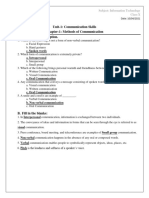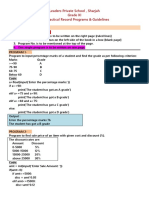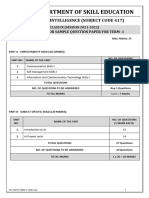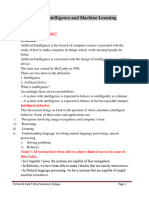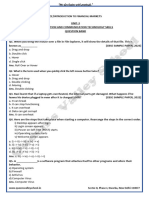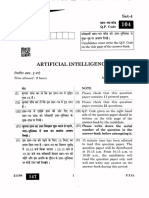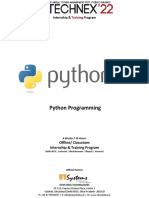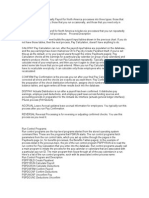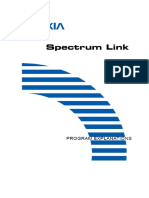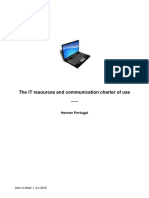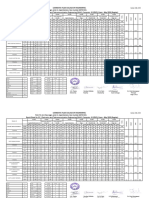0% found this document useful (0 votes)
168 views3 pagesIntro To Programming
Programming involves designing algorithms, writing code in a specific language, and testing code. There are many programming languages like Python, Java, C++, and JavaScript. Basic programming concepts include variables to store data, data types that specify what kind of data a variable can hold, operators to perform operations, and control structures that control program flow. Input and output allow programs to accept data and display results, while functions and modularity help break programs into smaller, reusable pieces. Debugging identifies and fixes errors, and algorithm design involves devising logical steps to solve problems. Comments, documentation, and version control aid in program development. Practice and problem-solving improve programming skills over time.
Uploaded by
202202214Copyright
© © All Rights Reserved
We take content rights seriously. If you suspect this is your content, claim it here.
Available Formats
Download as DOCX, PDF, TXT or read online on Scribd
0% found this document useful (0 votes)
168 views3 pagesIntro To Programming
Programming involves designing algorithms, writing code in a specific language, and testing code. There are many programming languages like Python, Java, C++, and JavaScript. Basic programming concepts include variables to store data, data types that specify what kind of data a variable can hold, operators to perform operations, and control structures that control program flow. Input and output allow programs to accept data and display results, while functions and modularity help break programs into smaller, reusable pieces. Debugging identifies and fixes errors, and algorithm design involves devising logical steps to solve problems. Comments, documentation, and version control aid in program development. Practice and problem-solving improve programming skills over time.
Uploaded by
202202214Copyright
© © All Rights Reserved
We take content rights seriously. If you suspect this is your content, claim it here.
Available Formats
Download as DOCX, PDF, TXT or read online on Scribd
/ 3






